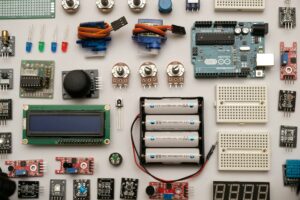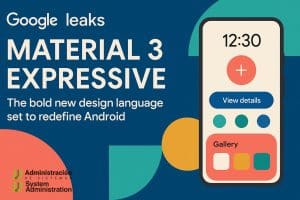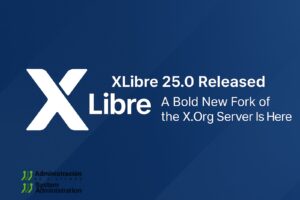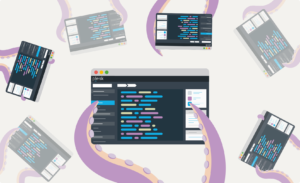If the first wave of AI in front-end was autocomplete, the second wave looks like this: a copilot that understands a site’s structure, chats with you about goals, and ships a working React/Next.js app you can iterate on immediately. Open Lovable (MIT-licensed, by the Firecrawl team) sits right there: you chat with an LLM, point it at a (permitted) source site, ask for changes (Tailwind migration, componentization, cleanup, forms, basic SEO, accessibility), and it generates + applies code while you preview it in a safe sandbox. It’s not a “clone-the-web” gadget; it’s a practical scaffold to prototype fast and migrate legacy HTML into a modern stack.
Below you’ll find (1) what it does, (2) why it matters for AI-assisted dev, and (3) a copy-paste quickstart so you can try it locally today.
What Open Lovable is (and what it isn’t)
- What it is: An open-source starter that combines Next.js (TypeScript) + TailwindCSS with a chat UI that orchestrates your chosen LLM (Anthropic, OpenAI, Google Gemini, or Groq) and Firecrawl to analyze a source page’s structure/content and generate React components and styles. It applies diffs in a sandbox (Vercel Sandbox by default; E2B supported) so you can see results live and iterate in a tight loop. An optional “fast-apply” path (Morph LLM) accelerates edits further.
- What it isn’t: A license to copy third-party content wholesale. The responsible use case is your own site(s), authorized sources, or public design systems/patterns for prototyping, refactor, and migration. Respect robots.txt, terms of service, and IP.
Why this matters (for AI x front-end teams)
- From code blocks to agents with tools. You’re no longer pasting one-off snippets. The agent reads context (DOM + your goals), generates code, applies it, and verifies in an executable sandbox. That’s an agentic loop, not just a chat.
- Real-world starting point. Most teams don’t start from zero; they start from legacy HTML/CSS/templates. Getting to a sane Next.js + Tailwind scaffold with components you can actually own can save days of boilerplate.
- Provider-agnostic LLMs. Bring Anthropic/OpenAI/Gemini/Groq—mix and match for long context, latency, and cost. This matters for enterprise governance and budget.
- Governance-friendly. The sandbox isolates the agent’s write/apply steps. You can wrap it with logging, code review, CI gates, and tests before anything reaches main.
Quickstart: install and run locally
Prereqs: Node 18+ (or Bun), pnpm/yarn/npm, Git.
Tip: Use a throwaway or test repo first while you explore.
1) Clone and install
git clone https://github.com/firecrawl/open-lovable.git
cd open-lovable
pnpm install # or npm install / yarn install
Code language: PHP (php)2) Create .env.local
Open Lovable needs API keys to talk to the crawler and your LLM of choice. Create a file named .env.local in the project root:
cp .env.example .env.local
Code language: CSS (css)Then edit .env.local and set:
# --- REQUIRED ---
FIRECRAWL_API_KEY=your_firecrawl_api_key # https://firecrawl.dev
# --- LLM PROVIDER: pick one (or more, and switch in the UI/config) ---
ANTHROPIC_API_KEY=your_anthropic_api_key # https://console.anthropic.com
OPENAI_API_KEY=your_openai_api_key # https://platform.openai.com
GEMINI_API_KEY=your_gemini_api_key # https://aistudio.google.com/app/apikey
GROQ_API_KEY=your_groq_api_key # https://console.groq.com
# --- FAST APPLY (optional) ---
MORPH_API_KEY=your_morphllm_api_key # https://morphllm.com/dashboard
# --- SANDBOX: choose ONE (default: vercel) ---
SANDBOX_PROVIDER=vercel # or 'e2b'
# Vercel Sandbox (recommended in dev)
# Method A (OIDC, easiest in development):
# 1) vercel link
# 2) vercel env pull
VERCEL_OIDC_TOKEN=auto_generated_by_vercel_env_pull
# Method B (PAT for CI/prod if OIDC unavailable):
# VERCEL_TEAM_ID=team_xxx
# VERCEL_PROJECT_ID=prj_xxx
# VERCEL_TOKEN=vercel_xxx
# E2B Sandbox (alternative)
# E2B_API_KEY=your_e2b_api_key # https://e2b.dev
Code language: PHP (php)Choosing a provider:
- Firecrawl extracts structure/content from the target page.
- LLM: If you expect large DOMs + many edits, pick a long-context model and keep an eye on token cost/latency.
- Sandbox: Vercel Sandbox is the quickest path on laptops; E2B is a solid alternative.
3) Run the dev server
pnpm dev # or npm run dev / yarn dev
Code language: PHP (php)Visit http://localhost:3000.
You’ll see the chat interface. Provide the source URL (authorized!) and your goals, e.g.:
“Rebuild our old landing into Next.js + Tailwind, extract the header/footer into components, make the hero accessible (keyboard + ARIA), add a newsletter form with client-side validation, and move colors to
colors.json.”
The agent will:
- Crawl the source (via Firecrawl).
- Generate a plan + diffs (via your LLM).
- Apply changes in the sandbox.
- Show you the live preview for quick iteration.
Rinse and repeat: “Replace the grid with Tailwind classes”, “Split this into Hero.tsx + CTAButton.tsx”, “Add basic SEO meta”, “Convert nav to keyboard-accessible menu”, etc.
Recommended dev flow
- Prototype in the sandbox until the preview matches your intent.
- Inspect diffs (the app files change under
/app,/components,/atoms, etc.). - Add guardrails: ESLint/Prettier, axe/lighthouse checks, simple component tests.
- Promote via PR to your main repo. Keep CI gates (linters, tests, preview links) before merge.
- Refine performance (fonts strategy,
next/image, bundle size), accessibility, and data integration.
Architecture at a glance
- Framework: Next.js (TypeScript).
- Styling: TailwindCSS; color palette in
colors.json. - Project structure:
app/,components/,atoms/,styles/,utils/,hooks/. - AI layer: Provider-agnostic (Anthropic/OpenAI/Gemini/Groq).
- Crawling: Firecrawl API.
- Sandbox: Vercel Sandbox (OIDC/PAT) or E2B.
- Optional fast-apply: Morph LLM to apply small edits faster.
- License: MIT.
Practical use cases
- Legacy → Modern migration: JSP/PHP/static HTML to Next.js + Tailwind with SSR/ISR and sane components.
- Landing prototyping: marketing asks for A/B tests—swap hero, palette, fonts—in hours, not days.
- Accessibility refactor: prompt the agent to standardize ARIA roles, focus handling, and keyboard nav; validate with axe/lighthouse.
- Design system extraction: rebuild repeating patterns into atoms/components to seed a new DS.
Safety, ethics, and IP
- Use it on your own sites, authorized sources, or public patterns.
- Respect robots.txt, site ToS, and applicable IP/licensing.
- Don’t ship agent-generated code to prod without review + tests.
- Keep sandbox isolated, with logging and quotas.
- For sensitive pages/data, avoid sending content to external LLMs unless your policy allows it (or swap to an approved provider).
Tips for best results
- Be explicit in prompts: stack, style rules, a11y as a blocking requirement, naming conventions, file structure.
- Chunk changes: request small, verifiable edits; iterate.
- Add evals: a basic checklist (bundle budget, lighthouse, axe, unit tests) before you accept a diff.
- Lock dependencies and audit supply chain in PRs.
FAQs
Which LLM should I pick?
Pick based on context length, latency, and price. For large DOMs + iterative diffs, long-context models from Anthropic/OpenAI do well; Gemini/Groq can shine on cost/latency. Many teams combine models (premium for big edits, fast for tweaks).
Can I deploy to production right after the first run?
Treat Open Lovable as a scaffold accelerator. Add tests, accessibility checks, and reviews, then ship via your CI/CD.
Vercel Sandbox vs E2B?
Both are safe runners. Vercel is frictionless (OIDC) for local dev; E2B is a capable alternative. Pick one in .env.local.
Is it “cloning” other people’s sites?
The project is designed for authorized sources and legit refactors. Copying protected content/assets/branding without permission is on you—don’t do it.
Bottom line
Open Lovable turns “give me a working React base from this site’s structure” into a conversational, verifiable loop. It won’t write your product for you, but it removes 70–80% of the boring scaffold—componentization, Tailwind migration, basic SEO—and lets teams focus on accessibility, performance, and real data. If you’ve been waiting for AI to move beyond code blocks into agent-with-tools territory, this is a solid, hackable place to start. Install it, wire an LLM, and see how much boilerplate it can retire from your next migration or prototype.











